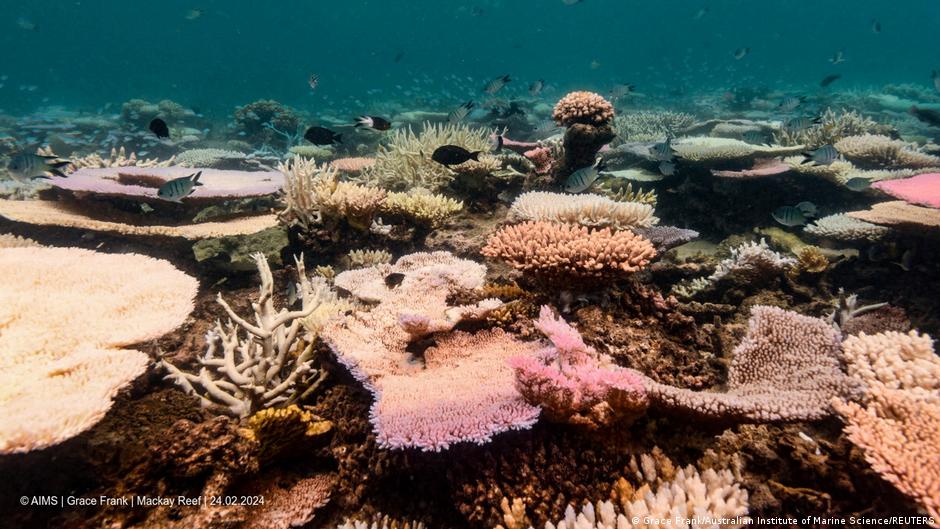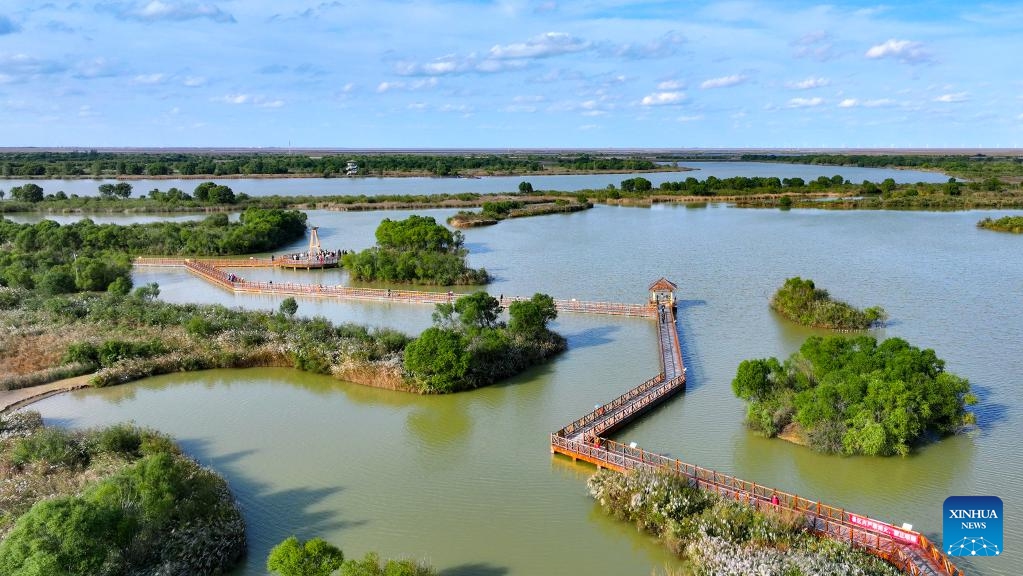Australian researchers turn to AI to save coral reefs – DW

Report on AI-Driven Coral Reef Restoration and its Alignment with Sustainable Development Goals
1. Ecological Crisis and the Call for Climate Action (SDG 13)
Australia’s Great Barrier Reef is facing an unprecedented ecological threat, marked by the most significant coral decline in recent history. This degradation is a direct result of repeated mass bleaching events, which are caused by rising ocean temperatures. This situation highlights the critical importance of Sustainable Development Goal 13 (Climate Action), as the restoration efforts are a direct response to the impacts of climate change on marine ecosystems.
2. An Innovative Solution for Marine Conservation (SDG 9 & SDG 14)
To combat this decline, scientists are implementing an innovative technological solution that aligns with Sustainable Development Goal 9 (Industry, Innovation, and Infrastructure). A new Deployment Guidance System utilizes artificial intelligence (AI) to significantly enhance the efficiency and effectiveness of coral reef restoration. This technological advancement is a crucial tool in the effort to achieve the targets of Sustainable Development Goal 14 (Life Below Water).
3. System Components and Operational Advantages
The Deployment Guidance System integrates several advanced technologies to achieve its objectives:
- Global Positioning System (GPS): Ensures high-precision mapping and navigation.
- Advanced Cameras: Provide visual data for the AI to analyze the seabed.
- Artificial Intelligence (AI): Processes data to identify the most suitable locations for planting new coral.
The primary advantage of this system is its speed and precision. It allows for the planting of juvenile corals at a rate far exceeding traditional methods that rely on human divers. This acceleration is vital for restoring reef ecosystems before further devastation from climate change occurs.
4. Direct Contributions to Sustainable Development Goals
This project makes direct and significant contributions to several key SDGs:
- SDG 14: Life Below Water: The core mission is to conserve and restore a critical marine ecosystem, directly addressing the goal of protecting life below water from threats like pollution and ocean acidification.
- SDG 13: Climate Action: By working to restore an ecosystem damaged by rising ocean temperatures, the initiative serves as a vital adaptation strategy to the unavoidable impacts of climate change.
- SDG 9: Industry, Innovation, and Infrastructure: The use of AI, GPS, and robotics showcases the application of sustainable and resilient innovation to solve pressing environmental challenges.
1. SDGs Addressed in the Article
SDG 14: Life Below Water
- The article’s central theme is the degradation of the Great Barrier Reef, a vital marine ecosystem, due to “repeated mass bleaching events.” The entire focus is on an intervention—using AI to “plant baby corals”—aimed at restoring this underwater environment. This directly aligns with SDG 14’s goal to conserve and sustainably use the oceans, seas, and marine resources.
SDG 13: Climate Action
- The article explicitly identifies the root cause of the coral decline as “rising ocean temperatures” and links it to “climate change.” The coral bleaching is presented as a direct consequence of climate change, making SDG 13 highly relevant. The restoration efforts are an adaptive measure to cope with the impacts of a changing climate.
SDG 9: Industry, Innovation, and Infrastructure
- The solution presented in the article is a technological one. It highlights how scientists are “turning to artificial intelligence (AI) for help” and using a “new Deployment Guidance System” that combines GPS and cameras. This focus on using advanced technology and scientific innovation to solve an environmental challenge connects directly to SDG 9’s emphasis on fostering innovation.
2. Specific Targets Identified
Targets under SDG 14: Life Below Water
-
Target 14.2: By 2020, sustainably manage and protect marine and coastal ecosystems to avoid significant adverse impacts, including by strengthening their resilience, and take action for their restoration in order to achieve healthy and productive oceans.
- The article’s description of using AI to “plant baby corals” is a direct “action for their restoration.” The goal is to “restore reef ecosystems” that have suffered from a “steepest coral decline,” which is a significant adverse impact.
-
Target 14.a: Increase scientific knowledge, develop research capacity and transfer marine technology… in order to improve ocean health.
- The development and use of the “Deployment Guidance System” is a clear example of developing research capacity and applying new “marine technology” (AI, GPS, cameras) to improve the health of the Great Barrier Reef.
Targets under SDG 13: Climate Action
-
Target 13.1: Strengthen resilience and adaptive capacity to climate-related hazards and natural disasters in all countries.
- The mass bleaching events caused by “rising ocean temperatures” are a climate-related hazard. The coral restoration project is an effort to strengthen the reef’s resilience and its capacity to adapt to these ongoing climate impacts.
Targets under SDG 9: Industry, Innovation, and Infrastructure
-
Target 9.5: Enhance scientific research, upgrade the technological capabilities of industrial sectors in all countries… and encourage innovation.
- The article showcases the enhancement of scientific research by describing how “scientists are turning to artificial intelligence (AI) for help.” This represents an innovative technological approach to an environmental problem, directly reflecting the spirit of this target.
3. Indicators Mentioned or Implied
Indicators for SDG 14 (Life Below Water)
- Rate of coral decline/cover: The article mentions the “steepest coral decline in decades.” This implies that the extent of coral cover and the rate of its decline are key metrics for assessing the health of the reef. Progress towards Target 14.2 would be measured by a reversal of this trend, i.e., an increase in coral cover.
- Rate of ecosystem restoration: The success of the AI-driven coral planting can be measured by the speed and scale of restoration. The article notes the new method is “far faster than traditional diver-led methods,” implying an indicator could be the number of corals planted per unit of time or the area of reef restored.
Indicators for SDG 13 (Climate Action)
- Change in ocean temperature: The article explicitly states “rising ocean temperatures” as the cause of the problem. This is a direct, measurable indicator of the climate-related hazard affecting the reef.
- Frequency/severity of mass bleaching events: The article links the coral decline to “repeated mass bleaching events.” Tracking the occurrence and intensity of these events serves as an indicator of the reef’s vulnerability and the ongoing impact of climate change.
4. Summary Table of SDGs, Targets, and Indicators
| SDGs | Targets | Indicators (Implied from the article) |
|---|---|---|
| SDG 14: Life Below Water |
14.2: Manage and protect marine and coastal ecosystems and take action for their restoration.
14.a: Increase scientific knowledge and develop marine technology. |
– Rate of coral decline/cover. – Rate of ecosystem restoration (e.g., area restored, speed of planting). |
| SDG 13: Climate Action | 13.1: Strengthen resilience and adaptive capacity to climate-related hazards. |
– Change in average ocean temperature. – Frequency and severity of mass bleaching events. |
| SDG 9: Industry, Innovation and Infrastructure | 9.5: Enhance scientific research and encourage innovation. |
– Application of new technologies (AI, GPS) for environmental restoration. – Increased efficiency of restoration methods (“far faster than traditional… methods”). |
Source: dw.com
What is Your Reaction?
 Like
0
Like
0
 Dislike
0
Dislike
0
 Love
0
Love
0
 Funny
0
Funny
0
 Angry
0
Angry
0
 Sad
0
Sad
0
 Wow
0
Wow
0



















































.jpg.webp?itok=0ZsAnae9#)

























